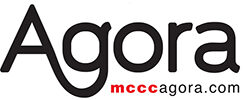
Light pollution is damaging our ability to study astronomical phenomenon with observatories.
“Light pollution is a major problem in America,” said Roger Spalding, professor of Physics and Astronomy.
The issue also is a concern here at MCCC, where our own observatory has been affected by light pollution.
Even the most famous observatories in America, such as the Palomar Mountain, the Wilson Observatory, and Hale Telescope (which Edwin Hubble used) have been affected by light pollution, Spalding said.
“The surrounding region of Southern California has adopted shielded lighting to reduce the light pollution that would potentially affect the observatory,” he said.
Most people don’t realize how the light from their homes affects the environment.
“Some of the major discoveries were done on telescopes that you now can’t even use from light pollution,” Spalding said.
Here at MCCC we no longer have aluminum coverings on the streetlamps, which would cut down on their contribution to light pollution.
That and other small changes over the years have accumulated to cause issues with light pollution for the MCCC observatory.
The observatory was first constructed in the 1980s after Spalding attended a conference in Flagstaff, Ariz.
Renovations were made to the observatory in 2009 through the efforts of the MASS Club and adviser Lori Bean, associate professor of Biology & Chemistry.
The deck surrounding the observatory was made safer and easier to use.
“We went out to the observatory, Math and Science Society, to use the telescope, and someone at the college heard about this,” Bean said.
“The next time the group visited, we found it had been all taped off with caution tape,” she said.
“They felt it was too dilapidated and unsafe to use. MASS still wanted to use it, however, so we ended up applying for a Foundation grant to have the deck built.”
Through their efforts, and regular maintenance that is performed by the MCCC maintenance staff, the observatory is still fully functional, despite being almost 40 years old.
The observatory, which stands behind the campus on the border of the solar panels, is mainly used as a supplement to in-class astronomy instruction, Spalding said.
The observatory is manually operated to change the viewing angle of the sky. Through the observatory, students can see the events that are going on with the natural rotation of the Earth.
Students can also safely view the sun inside the observatory when major celestial events are occurring.
Using the observatory for regular weekly classes isn’t practical, Spalding said.
It only accommodates about two people at a time, three if you include the professor.
“It’s like one microscope in a biology class, it’s way too little and with telescopes it’s prohibitively expensive,” Spalding said.
“It’s wonderful to have, but it doesn’t replace textbook or classroom instruction,” he said.
There are two types of astronomy, descriptive and observational. The astronomy courses that are offered on campus have traditionally been descriptive astronomy, Spalding said.
With the observatory, students can go out and observe what has been discussed in class.
“It would just be better (for classroom observing) to have a viewing field with telescopes to have them be adjustable to student’s own height, and handicap accessible,” Spalding said.
“You would need 15 telescopes and that’s not realistic for us at this time, as even those wouldn’t get used very often,” Spalding said.
Yet the observatory still fills a purpose as our eyes into the night sky.

